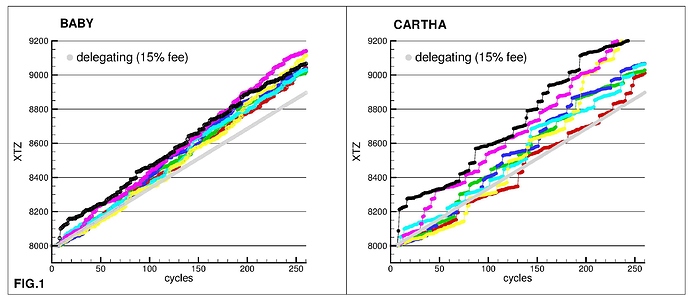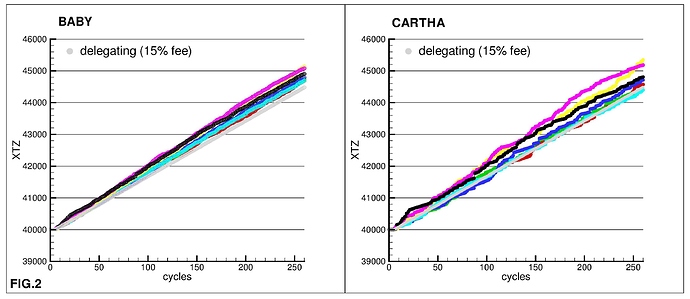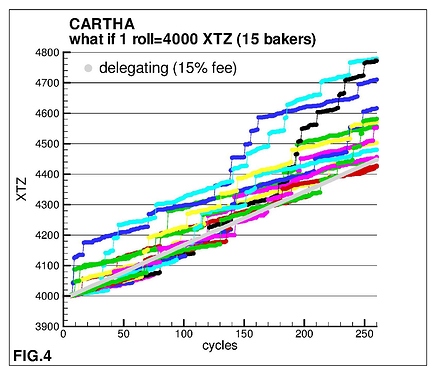The incoming Carthage protocol upgrade will implement a new reward system (Emmy+C) aiming to mitigate the effect of certain deflationary attacks (A new reward formula for Carthage).
A recent article posted on Medium by the Baking Bad team essentially confirmed the results presented in the Tezos Agora post and made an excellent analysis of various implications (https://medium.com/bakers-summit/deflationary-baking-and-emmy-c-in-pictures-ea424a2e9ea7).
Perhaps it is worth to mention that:
- the best immunization to inflationary or deflationary attacks is a robust decentralized network
- these attacks at the present time and possibly foreseeable future appear to be theoretical since in order to be effective within a reasonable timeframe, the bad actor should have a large stake on the network (xx%). The current largest stakeholder with ~8% of the total stake on Tezos is Coinbase. In principle alternative defensive mechanisms such as a coordinate action of the validators, can isolate the bad actor with tools already available (e.g. kick peer, ban IP address)
There are still questions regarding the nature of the new reward system. For example how the formula was derived? using a global optimization method, a constrained minimization or a simple try and error? The issue is relevant from a practical point of view because the new reward model will increase the variation of the reward which will affect mainly small bakers. In this regard it is unclear whether alternative solutions exist, perhaps better or slightly worse but with smaller variance. It also makes one wonder whether the variance was included in the optimization process (if any was used).
This post presents in a simple form some results of a series of simulations showing how certain participants on the Tezos network with 8000 xtz, 40000 xtz and a lot of xtz, will see their stake increase over time under the current reward system (hereafter referred as BABY, reward: bake=16 xtz, endorse=2 xtz) and the the new one (CARTHA, reward: bake=40 xtz, endorse=1.25 xtz).
The following assumptions have been made:
- initial list of bakers and associated numbers of rolls are taken from Alex spreadsheet (cycle 200) (https://docs.google.com/spreadsheets/d/1lc0ziE-veO8NSPiFytpFrk3Utzjj4EdJlFPjD0ZREiU/view#gid=0)
- simulations last for 260 cycles (~2 years). During this time the number of bakers remain constant
- all blocks are baked with priority 0, and 32 endorsements. No attacks
- rewards are compounded, eventually forming new rolls to be considered in the future baking cycles
The program, data files and figures are available at: https://drive.google.com/drive/folders/1L5F3cRHUOiL23ZYCoM5Ce2EXDfz9J_4z
Figure 1 shows how seven bakers who are staking 1 roll (8000 xtz) may see their xtz grow over time in the current system BABY and with the new reward system CARTHA. The grey line in the two panels illustrates the growth for a roll owner who delegates to a bigger baker (with 1005 rolls) and pays a 15% fee. The data file block4.dat from which this and the following two plots are made, includes the history of all 430 bakers.
The next figure (Fig. 2) reports another group of seven bakers with an initial stake equivalent to 5 rolls (40000 xtz).
In case someone is wondering how CARTHA will affect a stakeholder with 1005 rolls, see Figure 3.
There have been some initial discussions on incentivizing new bakers by reducing the size of the roll. Figure 4 illustrates the hypothetical paths of 15 bakers starting with 1 roll made of 4000 xtz (data file: block4-4000.dat).
A belated comment on the CARTHA protocol upgrade. Theoretical studies are clearly necessary for the evolution of the Tezos network. Broad implications of translating such studies into upgrades should be carefully evaluated by involving the largest possible group of members of the Tezos community and also outside groups (e.g was the study on the new reward system peer reviewed?). This should possibly happen before the protocol is injected for the onchain voting.
It is unknown how many bakers will drop out of the validators pool because of the effect of the CARTHA reward system but the risk of making the network more centralized is real, hence potentially providing fertile ground to those attacks that the CARTHA reward system is trying to prevent.
Note that small bakers (57 bakers with 1 roll, 29 with 2 rolls and 30 with 3 rolls) constitute ~27% of the network (data extracted from Alex spreadsheet). In this regard pro-active support of small bakers should be pursued by any means necessary as priority number one. Simply Reducing the size of a roll under the CARTHA protocol does not seem a very attractive method to increase the decentralization of the network.
One possible way to do it is by delegating to small bakers a portion of the TF stake and, if needed, provide technical support to maximize their efficiency (the author of this post holds a bigger stake, hence there is no conflict of interest, and no benefit would be derived from this initiative).



